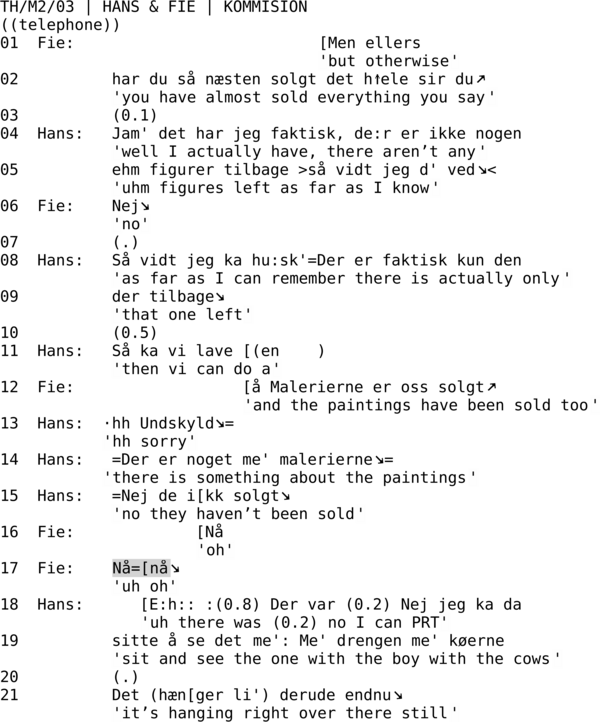Nå+nå
The particle nå (generally /nʌ/) can be reduplicated, which means it can be uttered twice in succession, as one single intonation unit. Nå+nå can be used in situations where a piece of information has been seriously revised, and where the speaker needs to indicate that her or his understanding has been revised as well.
In the example below, Hans confirms that he has almost sold all of the things that Fie has left in commission with him (lines 4-8) a part from a specific piece of furniture that Hans refers to as den der in lines 8-9. When Fie in line 13 asks whether the paintings are sold as well, Hans apparently realizes that he was wrong. Then he informs Fie that the paintings have not been sold (and in fact, he can actually see them from where he is seated). With that he revises the information that he gave Fie earlier, i.e. that he had sold almost everything næsten det h↑ele, and Fie acknowledges this revision by producing a nå+nå.

References and further reading
Den Danske Ordbog (DDO). Entry on nå.
Ordbog over Dansk Talesprog (ODT). Entry on nå.
Femø Nielsen (2002) gives a concise review of different uses of nå, excluding nå+nå.
Heritage (1984) is an extensive analysis of some of oh’s functions in English.
Heinemann (2016a) is an analysis of nå+nå and includes several examples.
Heinemann (2003) and (2009) has a paragraph on two other reduplicated elements in Danish, nej and ja.
Stivers (2004) gives an overview of the use of reduplication in interaction in several different languages.
Related entries
The Building Blocks of Talk-in-interaction > Word classes/Parts of speech > Interjections and particles
